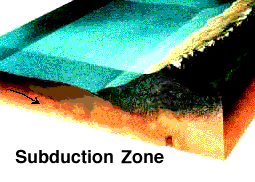This is a drawing of a portion of the Earth's crust undergoing subduction.
Click on image for full size
Image copyright 1997 by the American Geophysical Union. Further electronic distribution is not allowed.
Subduction
When two sections of the Earth's crust collide, one slab of crust can be forced back down into the deeper regions of the Earth, as shown in this diagram. This process is called subduction. The slab that is forced back into the Earth usually undergoes melting when the edges get to a depth which is hot enough. (A temperature hot enough to melt lithosphere is about a thousand degrees!). This process is called "subduction".
Melted crust rises back towards the surface where it helps make volcanoes and islands. Thus the formation of some volcanoes, mountains, and islands is connected to the process of subduction and continental drift.
The melted lithosphere also releases gases of the atmosphere which had become trapped in the ground. Thus subduction of the lithosphere contributes to recycling of the atmosphere!
You might also be interested in:

Plates at our planet’s surface move because of the intense heat in the Earth’s core that causes molten rock in the mantle layer to move. It moves in a pattern called a convection cell that forms when
...more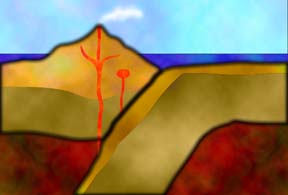
Many kinds of surface features are clues that our lithosphere is sliding. Two types of features can form when plates move apart. At mid ocean ridges, the bottom of the sea splits apart and new crust is
...more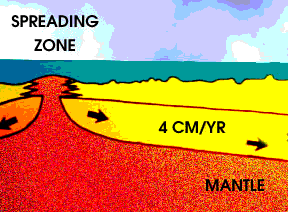
As the Earth cools, hot material from the deep interior rises to the surface. Hot material is depicted in red in this drawing, under an ocean shown in blue green. The hotter material elevates the nearby
...more
Mountains are built through a general process called "deformation" of the crust of the Earth. Deformation is a fancy word which could also mean "folding". An example of this kind of folding comes from
...more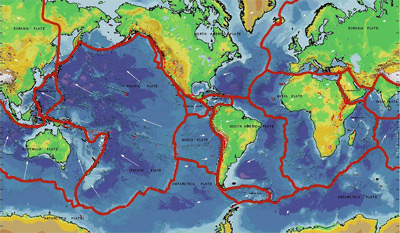
The main force that shapes our planet's surface over long amounts of time is the movement of Earth's outer layer by the process of plate tectonics. This picture shows how the rigid outer layer of the Earth,
...more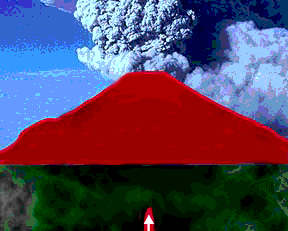
Volcanoes form when hot material from below risesand leaks into the crust. This hot material, called magma, comes either from a melt of subducted crustal material, and which is light and buoyant after
...more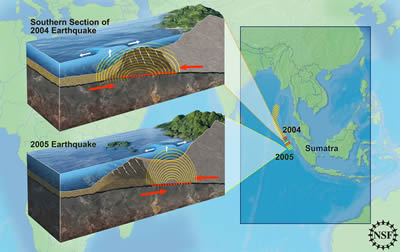
Earthquakes occur regularly in Sumatra, Indonesia because it is located near the boundary of two of Earth's tectonic plates. These earthquakes occur at 'subduction zones,' which are areas where one tectonic
...more


